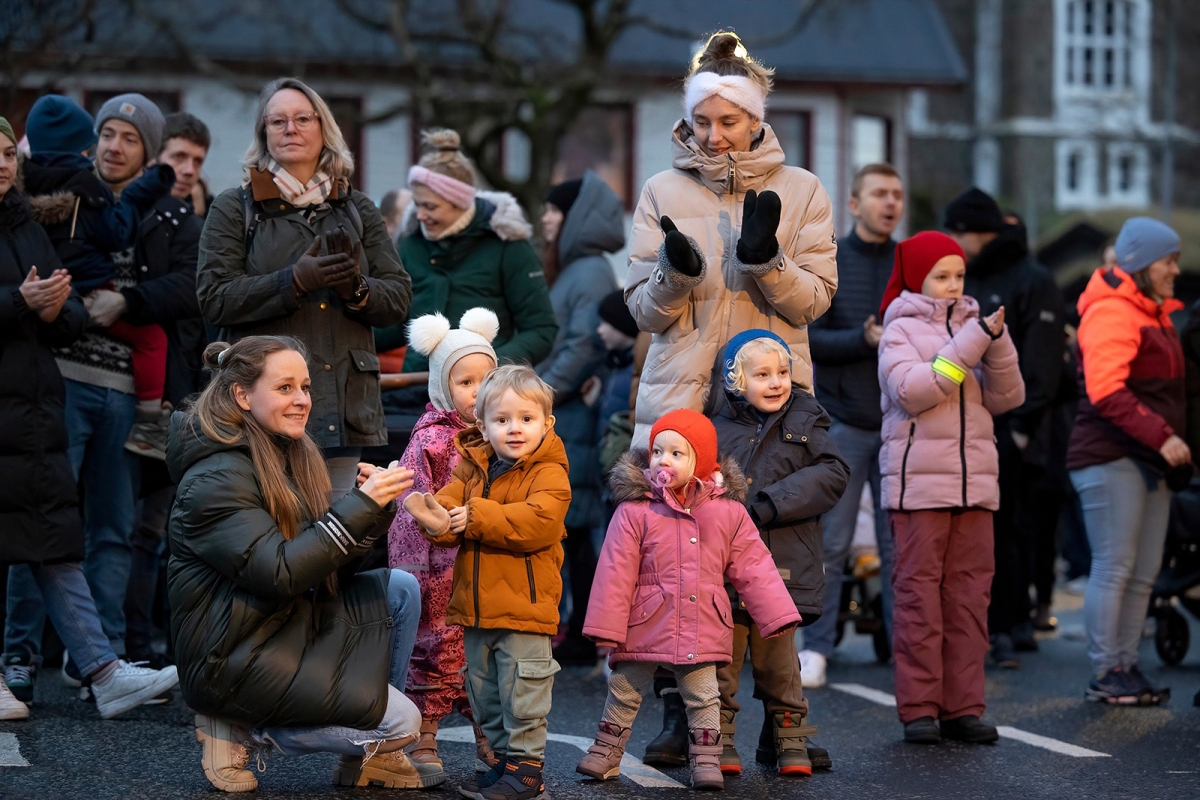Population
12. Dec 2024
Population was 54,648 on 1 November — up 0.5% year-on-year

Although the Faroese population continues to grow, the growth is slowing down. The population increased by 250 people in the past 12 months, compared with 450 in the previous 12-month period and about 800 five years ago. This change is due to a lower excess of births over deaths and an even lower net migration figure.
[px-graph-1]
The population trend is determined by net migration, i.e. the difference between the number of immigrants and the number of emigrants, and the excess of live births over deaths. The population growth in the past year was driven by an excess of births of 130 people and a net migration figure of 120 people. The last time net migration contributed less to population growth than the excess of births over a 12-month period was a decade ago.
The annual population growth dropped by almost 200 people in the past 12 months. This slowing growth is due to a lower excess of births over deaths and an even lower net migration figure. The excess of births declined, mainly due to fewer births. Net migration decreased more than the excess of births, especially since fewer people moved to the Faroes than in the previous period. See more figures in the table below.
Fewer births
The graph below shows the monthly trends for births and deaths. The steadily declining trend for births continues, while the death rate trend remains stable.
[px-graph-2]
Less migration
The trends in the graph below show that migration is on a decline. Immigration has dropped slightly more than emigration, resulting in lower net migration.
[px-graph-3]
Migration and residency status
The decline in net migration over the past year is primarily due to a decrease in people without long-term residency moving to the Faroes. The main reason is that fewer people without long-term residency moved to Faroes than before. Net migration could have dropped even further if the emigration trend in previous periods had continued. But this past year there were fewer – both with and without long-term residency – who left the Faroes than before. The table below shows migration to and from the Faroes by residency status in the last five 12-month periods.
Among those with long-term residency in the Faroes, net migration has been negative for all five periods included in the table below. This past year, however, it was slightly less negative than before. Fewer people with long-term residency moved to the Faroes, but even fewer with long-term residency left the country.
Total net migration has been slowly declining over the past five periods. In the last two periods, it was net migration among those without long-term residency that brought the total net migration down, while in the previous three periods, it was net migration among those with long-term residency that brought the total net migration down.
Population figures have a one-month lag
The figures have a one-month lag due to delays in registrations, especially regarding address changes, where many registrations are made after the month of address change has ended. To accommodate as many corrections as possible, there is a one-month lag in the data.
About the population figures
The population is defined as all individuals registered in the national register as residents of the Faroe Islands. Population data includes date of birth, gender, place of birth, citizenship, relationship status, and, where applicable, information on immigration and emigration, domestically as well as between the Faroe Islands and other nations.
About the trend
The trend describes the population trend by adjusting for seasonal effects and other error components in the population figure.